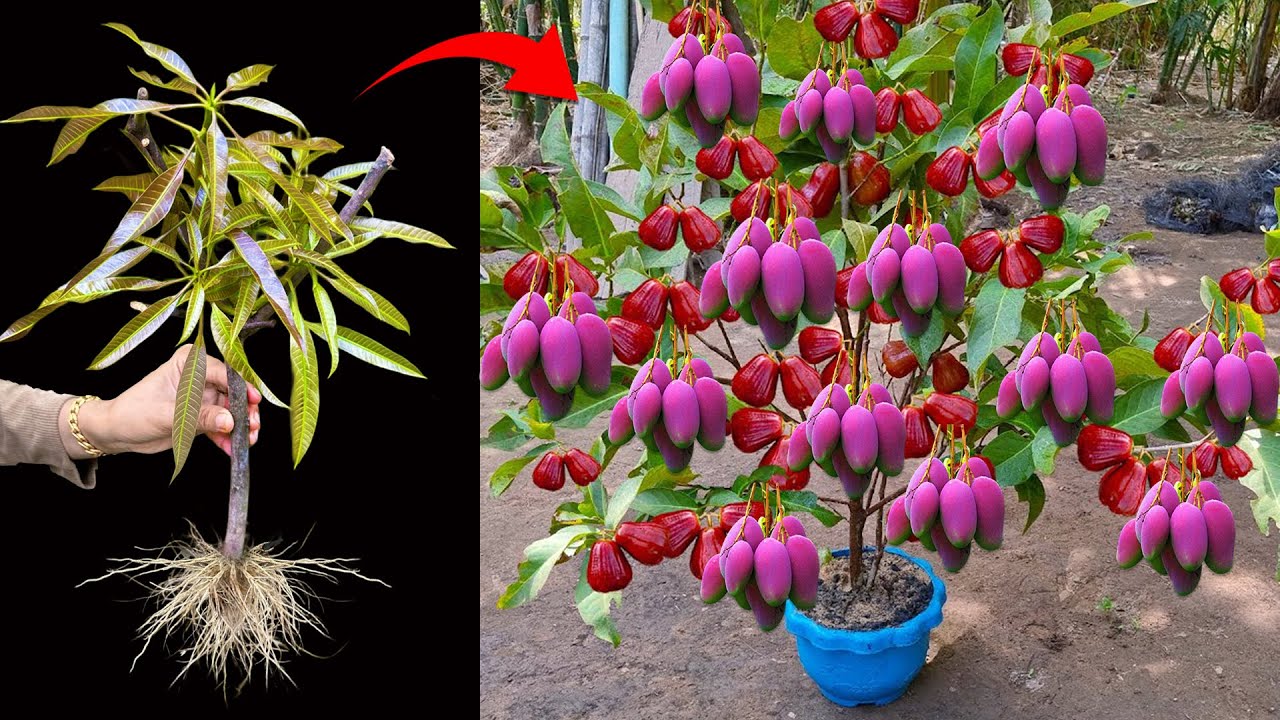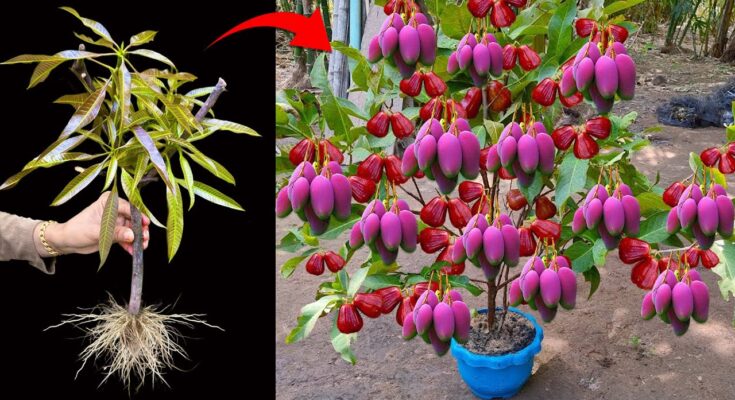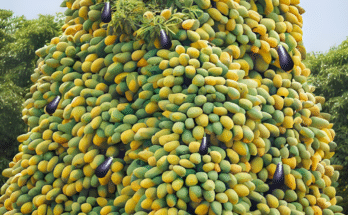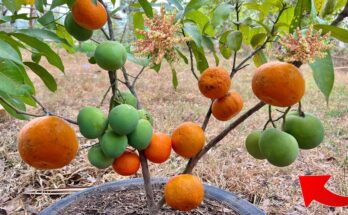How to Grow Mango with Java Apple Fruit
Growing tropical fruits like mango and Java apple (also known as Syzygium samarangense or wax apple) can be a rewarding hobby, especially for gardeners living in warm climates. While these fruits are usually propagated through seeds or grafting, growing them from cuttings is possible with careful attention and technique. This guide is tailored for beginners and will walk you through the steps needed to grow mango and Java apple from cuttings.
Understanding Mango and Java Apple Propagation
Before diving into the propagation process, it’s important to understand how mango and Java apple trees generally grow. Both are tropical fruit trees but differ in their propagation tendencies.
- Mango trees are traditionally propagated by grafting because they don’t typically root well from cuttings. However, with the right environment and rooting hormones, success can be achieved.
- Java apple trees, on the other hand, are more amenable to growing from cuttings. They root relatively easily and are well-suited for this propagation method.
Though the focus here is on growing both fruits from cuttings, it’s important to note that success rates vary, and patience is essential.
Materials You Will Need
To get started, gather the following materials:
- Healthy branches from a mature mango and Java apple tree
- Sharp, sterilized pruning shears
- Rooting hormone (powder or gel)
- Clean pots or containers
- Well-draining potting mix (coconut coir, perlite, and peat moss mix is ideal)
- Clear plastic bags or a humidity dome
- Spray bottle with water
- Labels (optional)
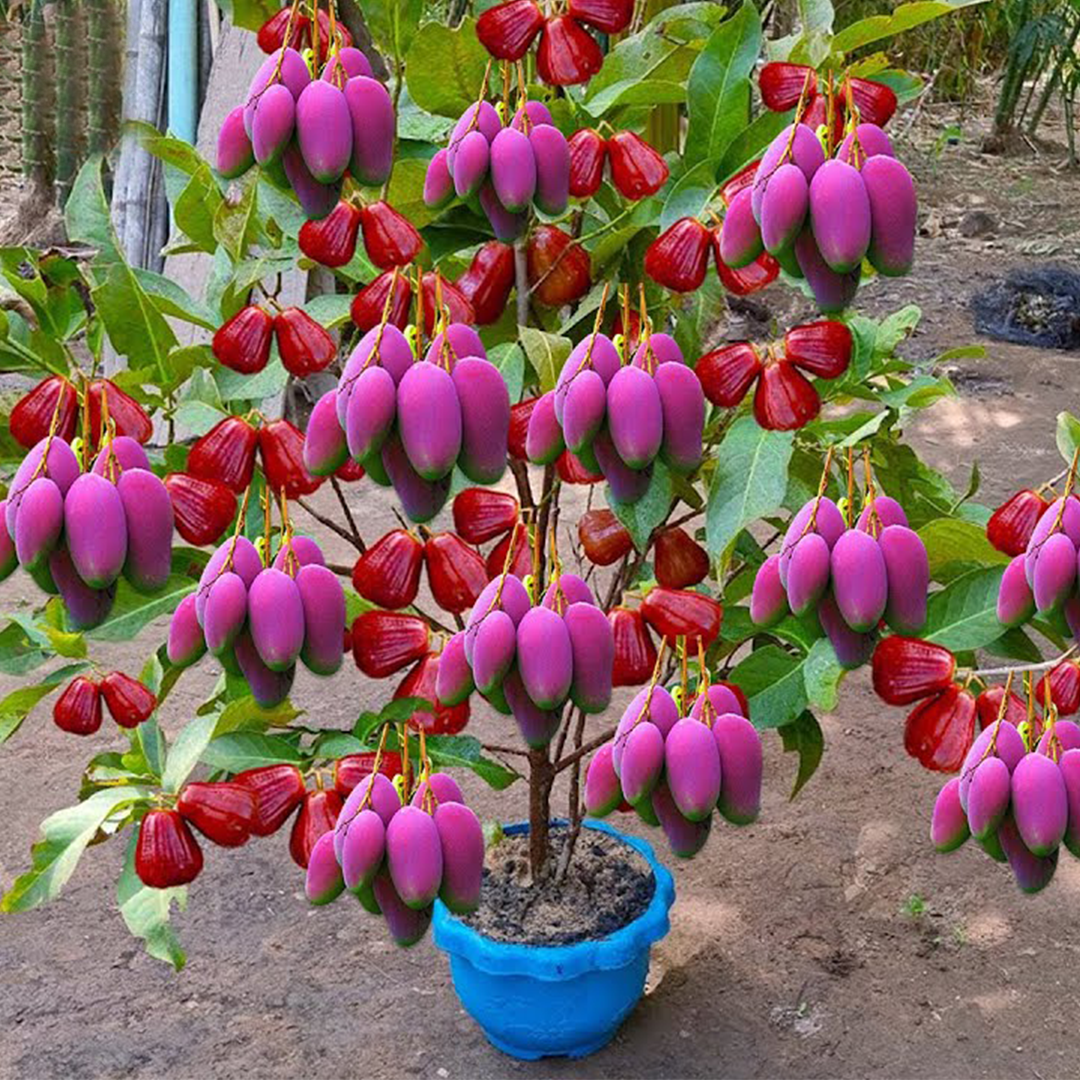
Step-by-Step Guide for Java Apple Cuttings
Java apple is generally easier to grow from cuttings than mango, so we’ll start with it:
- Select the Cutting: Choose a healthy, semi-hardwood stem (not too young, not too old) about 6–8 inches long. It should have at least 2–3 nodes.
- Remove Excess Leaves: Trim off the lower leaves, leaving only one or two at the top. This helps the cutting focus energy on root development.
- Dip in Rooting Hormone: Dip the cut end of the stem in rooting hormone. This boosts the chances of root development.
- Prepare the Pot: Fill a container with a moist, well-draining potting mix. Insert the cutting about 2–3 inches into the soil.
- Create a Humid Environment: Cover the cutting with a clear plastic bag or use a humidity dome to retain moisture. Make sure the plastic doesn’t touch the leaves.
- Place in a Warm Area: Keep the pot in a bright, warm area (not direct sunlight). A temperature range of 25–30°C (77–86°F) is ideal.
- Monitor and Mist: Mist the cutting daily to keep humidity high. Avoid overwatering the soil; it should be moist, not soggy.
- Check for Roots: In about 4–6 weeks, gently tug on the cutting. If there is resistance, roots have started forming.
Once rooted, the cutting can be transplanted into a larger pot or directly into the ground if conditions are suitable.
Step-by-Step Guide for Mango Cuttings
Mango cuttings are more difficult, but not impossible:
- Choose the Right Cutting: Select a healthy, semi-hardwood branch 8–10 inches long. Ideally, choose a branch that has already started to harden but is not too old.
- Remove Leaves and Dip in Rooting Hormone: As with Java apple, remove the lower leaves and dip the cut end into a rooting hormone. Mango cuttings benefit more from gel-based hormones that offer longer exposure.
- Use Bottom Heat: Mango cuttings root best with bottom heat (around 25–30°C). You can use a heat mat under the pot for consistent warmth.
- Use Moist, Well-Draining Mix: Insert the cutting into a sterile, moist growing medium. A mix of perlite and peat moss works well.
- Maintain High Humidity: Cover with a humidity dome or plastic bag, similar to the Java apple method.
- Place in Indirect Light: Keep the cutting in a warm, indirect light location. Avoid intense sunlight that can dry it out.
- Be Patient: Mango cuttings can take up to 8 weeks or longer to root. Keep the soil moist and avoid disturbing the cutting.
Due to low success rates, consider rooting multiple cuttings to increase your chances of success.
Post-Rooting Care
Once your cuttings have developed a strong root system, you can transplant them into larger pots with quality soil rich in organic matter. Water regularly but allow the top inch of soil to dry out between waterings to prevent root rot.
Fertilize monthly with a balanced fertilizer during the growing season. Monitor for pests like aphids and mealybugs, especially when grown indoors or in greenhouses.

Tips for Success
- Use sterile tools and containers to reduce the risk of disease.
- Avoid overwatering—cuttings are prone to rot if left in soggy conditions.
- Label your cuttings, especially if you’re growing both mango and Java apple simultaneously.
- Don’t rush the process—rooting takes time and consistent conditions.
Conclusion
Growing mango and Java apple trees from cuttings can be a fascinating and satisfying experience, especially for beginners who enjoy experimenting with plant propagation. While Java apple is more beginner-friendly, mango cuttings require more care and patience. By following the right steps and maintaining proper conditions, you can successfully propagate these tropical fruits and enjoy the journey from cutting to fruit-bearing tree.
